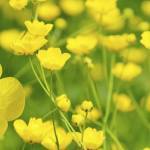Pasture Safety: Toxic Plants and Horses

Horse owners relish the increasing temperatures and the blossoming of nature’s bounty that spring brings. Even though horse owners may have set tulip and daffodil bulbs in gardens and beds far away from paddocks, many critters can unearth them and transport them to grazing areas. Inquisitive horses, perhaps a little hungry for fresh fodder after having only hay all winter, might ingest those toxin-containing bulbs with dire consequences.
“Tulip and daffodil bulbs contain chemicals called glycosides. These naturally occurring plant products are toxic to horses because they negatively impact electrolyte levels in muscle and other tissues. The heart, intestines, and kidneys are targets of plant glycosides,” explained nutritionist Kathleen Crandell, Ph.D., from Kentucky Equine Research (KER).
Abnormal electrolyte levels cause muscles to “misfire,” resulting in abnormal contractions. Common clinical signs associated with glycoside toxicity include colic, drooling, loss of appetite, depression, and cardiac abnormalities such as a weak, irregular pulse.
Many other ornamental plants also pose a threat to horses, including iris, oleander, and yew.
“Before planting trees, shrubs, and other plants, be sure to research your choices, especially if there is any chance horses may come in contact with them. If in doubt, touch base with your local equine or agricultural extension specialist,” advised Crandell. “Always contact your veterinarian if any signs of colic, excessive salivation, or depression develop, particularly if more than one horse is affected.”
In addition, be certain that horses have adequate pasture, forage, and environmental stimulation available at all times. Hungry, bored horses are more likely to explore plants they wouldn’t normally eat. Grazing muzzles might also help limit the ingestion of inappropriate plants.
“Owners are encouraged to contact KER for a nutrition consultation to ensure their horses are being offered an optimal diet to meet their individual needs,” Crandell added.








